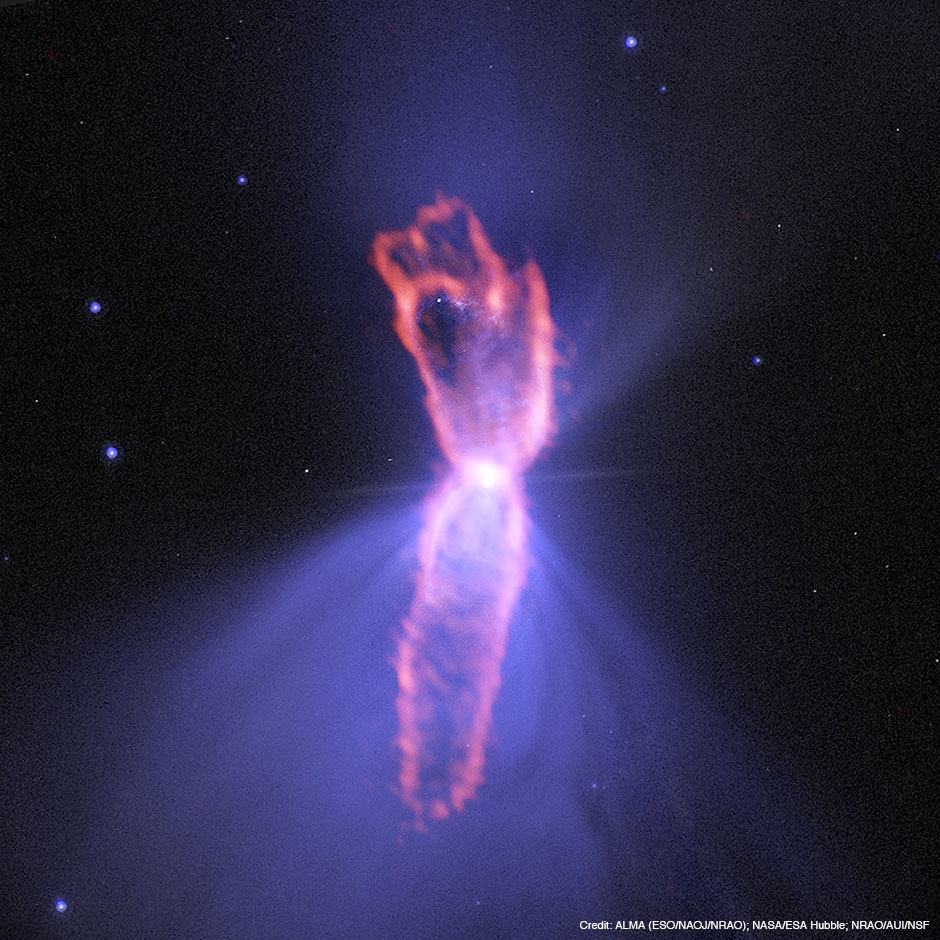Imaging the Coldest Object in the Universe
Astrophotography・

When relatively light stars finish their lives, the outer layers of the stars flow into space and form nebulae. The Boomerang Nebula that we feature this week is at this nebula stage. It is called a “protoplanetary nebula.” This nebula is known as a celestial object whose temperature is lower than that of the cosmic microwave background (2.7 degrees Kelvin). Astronomers think that its temperature decreased due to the expansion of the gas ejected by the star. In this image, the nebula as observed by the Hubble Space Telescope is shown in purple, and the carbon monoxide gas observed by ALMA is shown in red. Thanks to ALMA’s high-resolution, the detailed outflow of gas from the star was revealed. We can understand the origin of very low temperature celestial objects by researching the movement of the gas in detail.
Text by: Masaaki Hiramatsu (NAOJ Chile Observatory)
End of a Quiet Star creates a World of Cold Molecules
A protoplanetary nebula releases the materials produced inside a star out to the surroundings. This is a spot where our Universe is evolving chemically. The rapidly expanding gas cools and forms molecules and dusts. They are perfect targets for ALMA because ALMA can observe the radio waves that those objects emit. In fact, we found out that gas ejection started around 1500 years ago through calculations based on observations of the extent and the velocity of the molecules. Further investigations about what kinds of molecules are made in such extreme environments are expected. Observing these protoplanetary nebulae is extremely important to figure out how and why planetary nebulae have various types of shapes. It is thought that this beautiful bipolar jet was born from the interaction between the central star and its companion star because the central star was a binary star.
Text by: Akito Tajitsu (Subaru Telescope)
Translations by: Hiroko Tsuzuki and Ramsey Lundock (Public Relations Center, NAOJ)
Image Data
| Object | Boomerang Nebula |
|---|---|
| Telescope | ALMA / Hubble Space Telescope |
| Credit | ALMA (ESO/NAOJ/NRAO); NASA/ESA Hubble; NRAO/AUI/NSF |